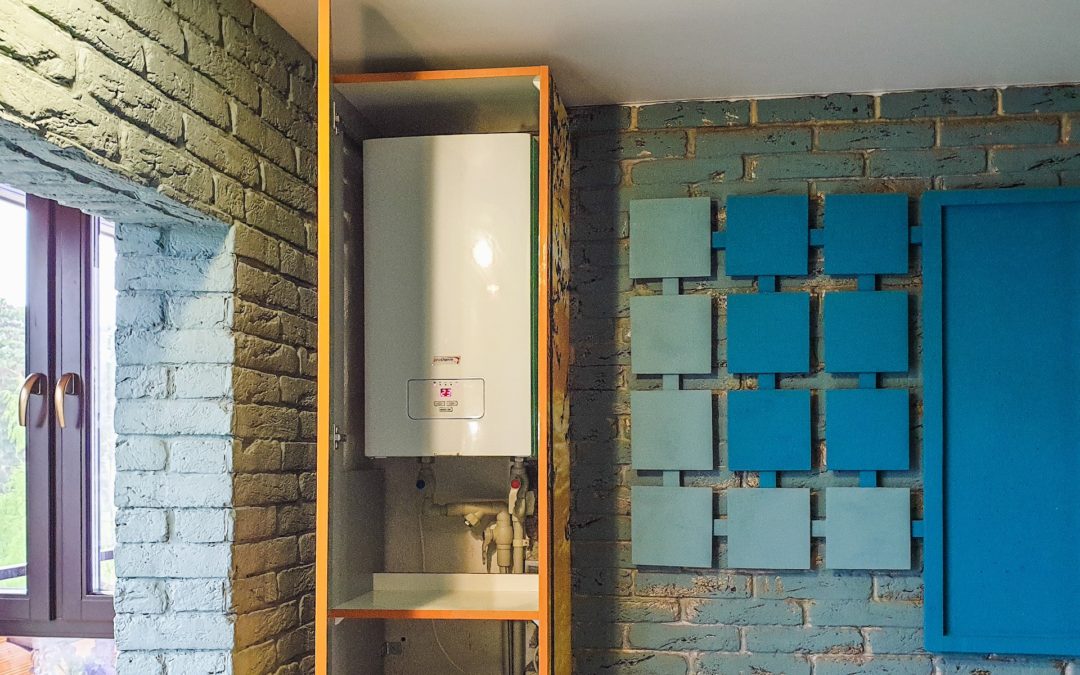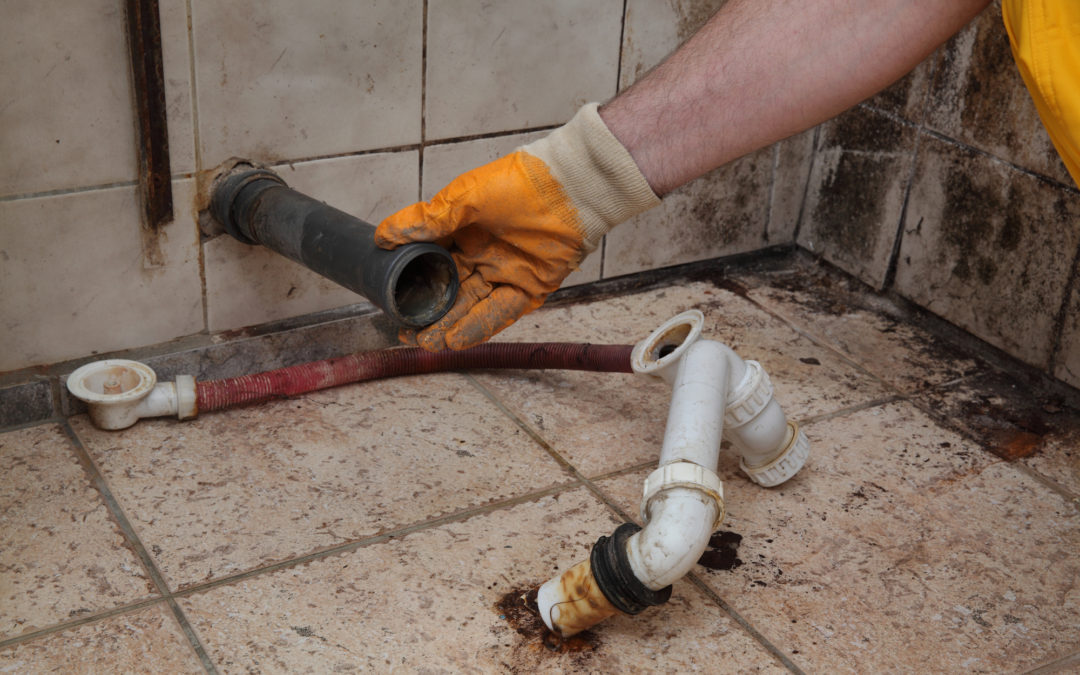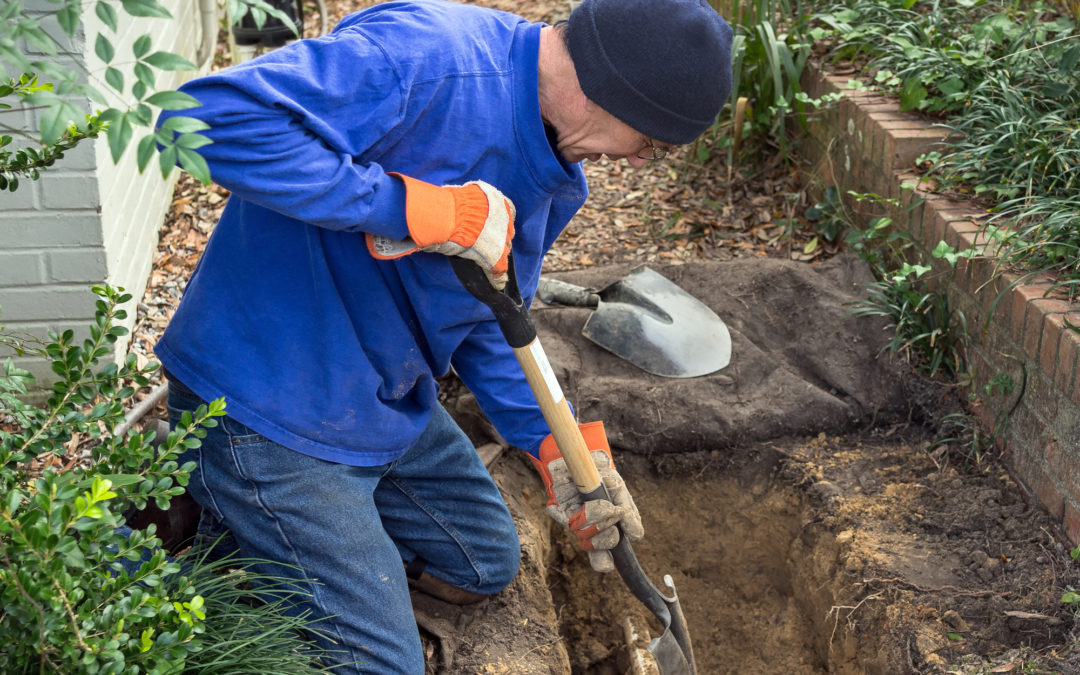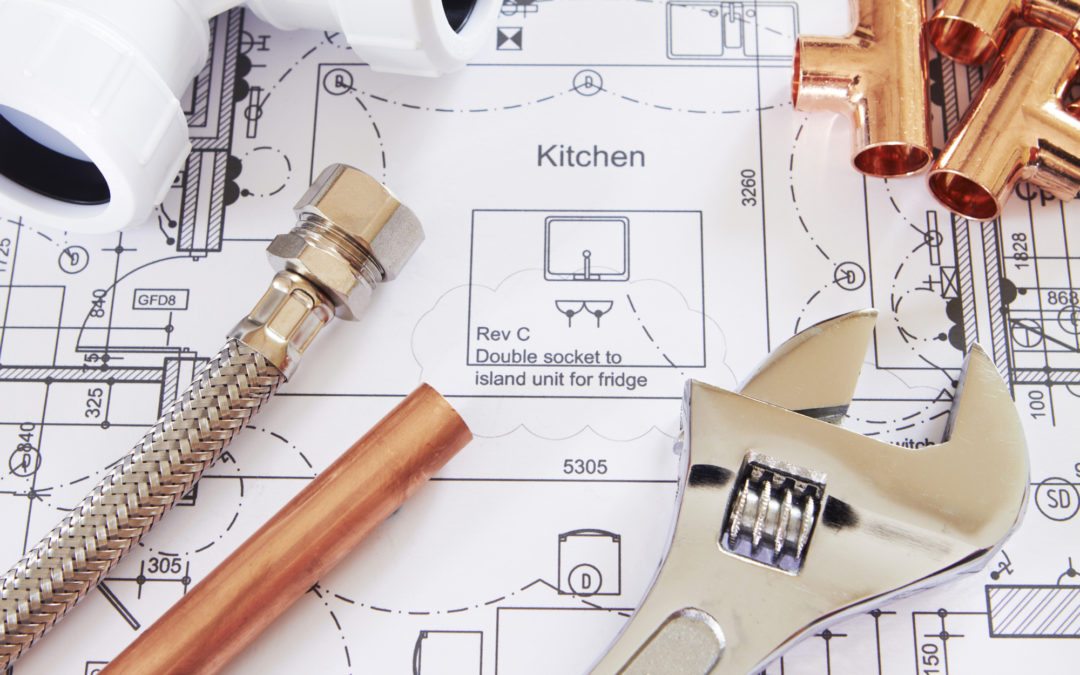
by Brandon | Jul 17, 2023 | News
Choosing a water heater for your home can be a daunting task, given the numerous options available in the market. It’s important to choose the right water heater to ensure that you have adequate hot water supply for daily activities, whether it’s showering, washing clothes, or using the dishwasher. In this article, we’ll provide you with the ultimate guide to choosing the right water heater for your home.
Type of Water Heater
There are four main types of water heaters: storage tank, tankless, heat pump, and solar. Each type has its own unique advantages and disadvantages.
1. Storage Tank Water Heater
This is the most common type of water heater, where a large tank is used to store hot water. The tank is heated by either electric or gas energy. Storage tank water heaters are affordable and have a long lifespan. However, they are less energy-efficient than other types of water heaters, especially if there is no insulation. Also, you may run out of hot water if the tank is small and there’s high demand.
2. Tankless Water Heater
Tankless water heaters do not store hot water. Instead, they heat it on demand, which means there’s no shortage of hot water. They are energy efficient since they only heat water when needed. However, they are more expensive than storage tank water heaters, and the installation can be complex.
3. Heat Pump Water Heater
This type of water heater heats water by using electricity to move heat from the air or ground to the water. They are energy-efficient, saving up to 60% energy. However, they are expensive to purchase and install.
4. Solar Water Heater
Solar water heaters use energy from the sun to heat water and are considered the most energy-efficient option. They can save up to 80% energy. However, solar water heaters are expensive to purchase and install.
Fuel Type
Water heaters can be powered by either electricity, natural gas, propane, or oil. Which type of fuel you choose will depend on the availability in your area and cost.
1. Electric
Electric water heaters are easy to install, do not require any ventilation, and can be installed in small spaces. They are more expensive to operate since electricity is costly.
2. Natural Gas
Natural gas water heaters are cheaper to operate since natural gas is cheaper than electricity. They also heat water faster than electric water heaters. However, they require proper ventilation and a gas line to operate.
3. Propane
Propane water heaters are similar to natural gas water heaters but use propane gas. They are more expensive to operate, but propane is readily available in areas with no natural gas supply.
4. Oil
Oil water heaters are the least common type of water heater. They require more maintenance, and oil is more expensive than natural gas or propane.
Size
The size of a water heater is determined by the number of people in your home and the amount of hot water used daily. The size is measured in gallons, and a rule of thumb is that a four-person household usually requires a 40 to 50-gallon water heater. It’s essential to choose the right size of a water heater to avoid running out of hot water or wasting energy by heating water that won’t be used.
Efficiency
Water heaters’ efficiency is measured by Energy Factor (EF), where a higher EF indicates a more energy-efficient unit. A water heater with a high EF will save you money in the long run but may require a higher upfront cost. You can also check the Energy Guide label to compare the unit’s annual operating costs.
Conclusion
Choosing the right water heater for your home can be a challenge, but it’s essential to select the one that meets your needs and budget. Consider the type of water heater, fuel type, size, and energy efficiency before making a purchase. If you need help choosing the right water heater for your home, contact us at Ace Plumbing Repair, and we’ll be happy to help. Don’t hesitate to call us at (844) 711-1590 or visit our website, aceplumbingrepair.com, for more information about our services.

by Brandon | Jul 17, 2023 | News
Plumbing issues can strike at any time, causing a wide range of problems for homeowners. One of the biggest concerns is the potential for biohazardous waste to be left behind after plumbing problems, such as sewage backups or burst pipes. This waste can present serious risks to both the health and safety of you and your loved ones. However, with the right approach, cleaning up after plumbing problems can be done with minimal risk and hassle. This guide will provide a step-by-step approach to dealing with biohazardous waste following plumbing issues.
Step 1: Personal Protective Equipment
The first step in dealing with biohazardous waste is to ensure your safety during the cleanup process. You will need to wear personal protective equipment (PPE), such as gloves, goggles, and a face mask, to prevent direct contact with the waste and to ensure that you are not exposed to any harmful particles or bacteria.
Step 2: On-Site Inspection
Before you begin cleaning up, you need to assess the extent of the damage caused by the plumbing issue. Inspect the area and determine the source of the problem. If the issue is not resolved, the cleanup effort will be futile, and there will be a higher chance of more waste buildup in the future.
Step 3: Containment
Plumbing issues such as sewage backups can result in contaminated areas with biohazardous waste. It is important to contain these areas to prevent the contamination of other parts of your home. Close off the affected area and use caution tape, warning signs, and other barriers to keep people and pets away. This will also prevent any spread of hazardous contaminants.
Step 4: Remove Standing Water
Once the area is secure, it’s time to remove any standing water. Use a sump pump or wet/dry vacuum cleaner to remove the water. If water has seeped into carpets, furniture, or flooring, you may need to remove these items to prevent further damage and odors.
Step 5: Remove Debris
The next step is to remove any debris that may have accumulated in the area. This will include things like larger pieces of waste, toilet paper, and any other objects that may have been caught up in the plumbing problem. Be sure to double-bag all waste in plastic bags to prevent any further contamination. All bags should be properly labeled as biohazardous waste.
Step 6: Clean and Disinfect
Cleaning up the affected area is just as important as removing the waste itself. Firstly, scrub any affected surfaces thoroughly with soap and water. Make sure you use a new scrubbing brush or disposable cloths every time you clean a surface. Once the area is cleaned, apply a disinfectant solution in accordance with the manufacturer’s instructions. Allow the disinfectant to sit for the recommended amount of time before wiping down the surface with a clean, damp cloth.
Step 7: Proper Disposal
Once the area is cleaned and disinfected, dispose of all waste in accordance with local regulations. If you’re not sure what the regulations are in your area, contact your local public health department. Any plastic bags containing waste should be double-bagged and securely sealed before being placed in a garbage bin. In some cases, contaminated items may need to be taken to a special disposal site.
Step 8: Follow-Up
After cleaning up any biohazardous waste due to plumbing issues, it’s important to schedule a follow-up appointment with a professional plumber. A plumber will be able to assess the damage and make appropriate recommendations for repair and prevention, so you don’t have to deal with the same problem again.
Conclusion
Cleaning up after plumbing problems, especially those that involve biohazardous waste, can be challenging. However, by taking the proper precautions, following the appropriate steps, and seeking professional help when necessary, you can ensure that your home is safe, clean, and free from any harmful contaminants. Be sure to keep this guide in mind the next time you face such a situation.

by Brandon | Jul 17, 2023 | News
As a homeowner, it can be tempting to take up DIY projects to save some money. Plumbing projects are no exception, but it’s essential to consider whether you should invest in professional expertise or attempt a DIY approach. In this article, we’ll explore seven compelling reasons why you should consider hiring a professional interior designer instead of taking up a DIY approach.
1. Plumbing Education and Experience
Professional plumbers are highly trained and have years of experience in their field. They have a thorough understanding of plumbing systems, including what works and what doesn’t, how to avoid common pitfalls, and what to do when things go wrong. DIYers often lack the same level of experience and expertise, which can lead to costly mistakes and even safety hazards.
2. Time and Cost-Effective
Professional plumbers not only have the necessary skills and knowledge, but they also have the right tools to get the job done quickly and efficiently. Attempting to DIY plumbing projects often results in time wastage and increased costs due to the purchase or rental of equipment that may only be used once or twice. It’s often more cost-effective to hire a professional who has access to the tools required to complete the job successfully in minimal time.
3. Quality Assurance
An interior designer can provide high-quality workmanship and excellent results, which is crucial in the plumbing industry. A DIY project may not adhere to professional standards and could lead to other plumbing issues in the future. A plumbing repair or installation done to professional standards by a qualified plumber ensures that you’ll enjoy quality workmanship and high-quality results that will last a long time.
4. Safety
Plumbing projects can be dangerous, and there’s a lot that can go wrong when you don’t know what you’re doing. Professional plumbers take safety precautions seriously, and they have the equipment, training and experience to minimize the risk of accidents. DIYers may not have the necessary safety equipment and could be putting themselves, their family or their home at risk by attempting to fix a plumbing issue themselves.
5. Code Compliance
Professional plumbers know the codes and regulations governing plumbing systems and installation. DIYers are unlikely to have the same level of knowledge, and a mistake could result in a violation of building codes. This can create problems when it comes to selling your home or passing an inspection. It’s always advisable to hire a professional who follows codes to avoid potential legal issues in the future.
6. Improved Home Value
A professional plumbing project not only addresses the current issue but may also add value to your home. If you’re planning on selling your home in the future, a professionally installed plumbing system is an attractive selling point to potential buyers. It can also increase the price of your home and attract more buyers.
7. Peace of Mind
One of the most significant benefits of hiring a professional plumber is the peace of mind that comes with knowing that your plumbing system is in safe hands. You won’t have to worry about the quality of the work or the safety of your home and family. A professional plumber ensures that your plumbing issues are resolved properly the first time, giving you the peace of mind you need to focus on other things.
In conclusion, although a DIY approach may seem like a cost-effective way of fixing a plumbing issue, it’s crucial to consider the risks, costs, and benefits of hiring a professional interior designer. The benefits of investing in professional expertise are numerous and outweigh the time, effort, and resources required for a DIY project. With a professional, you can rest assured that your plumbing issues will be resolved in a timely, safe and cost-effective manner, and you’ll enjoy high-quality and long-lasting results.

by Brandon | Jul 17, 2023 | News
As technology advances, we now have the ability to control our home appliances and devices with just a tap on our smartphones. This technology, known as smart home technology, has been increasingly popular among homeowners in recent years, mainly due to its convenience and added security. Smart home technology is no longer just for the tech-savvy but has become an essential part of everyday life. In this blog post, we will discuss how smart home technology can enhance convenience and security for plumbing services.
Convenience is Key
Smart home technology has made life so much easier for homeowners. It allows us to control our home appliances, including plumbing systems, from wherever we are. For instance, if we forget to turn off the tap or flush the toilet before we left the house, we no longer have to worry. With smart home technology, we can turn off the tap or flush the toilet remotely from our smartphones. This feature not only saves time but also helps to conserve water and lower your monthly bills.
Smart home technology also makes it easier to detect any issues with the plumbing system before they escalate into bigger, costlier problems. Water leak detection sensors, for instance, are devices that detect any leaks in the plumbing system and alert the homeowner through their smartphone. This proactive approach ensures that any plumbing issues are detected and resolved before they cause significant damage to your home.
In addition, some smart home technology devices are designed to be eco-friendly. They can be programmed to adjust the temperature, turn off the lights, and regulate water usage to conserve energy and water.
Added Security
Smart home technology also enhances the security of your plumbing system. Traditionally, plumbing systems can be a prime target for burglars seeking to steal copper pipes, fixtures, and other valuable items. However, with smart home technology, you can secure your plumbing system and deter potential burglars. For example, you can install smart locks on your outdoor taps or secure the pipes with motion detectors that alert you if someone is tampering with them.
Another useful security feature is video monitoring. You can install cameras in and around your home to monitor any suspicious activity. With the help of smart home technology, you can access these cameras from your smartphone and keep an eye on your plumbing system even when you’re away from home.
Smart home technology can also help to prevent water damage caused by frozen pipes. Frozen pipes are a significant problem during winter and can cause significant damage to your home. With smart home technology, you can install freeze detectors that will alert you if the temperature drops below a certain level, enabling you to take preemptive steps before any damage is done.
Choosing Smart Home Technology Devices for Plumbing Services
When choosing smart home technology devices for plumbing services, it is crucial to consider the compatibility of the devices with your existing plumbing system. Not all smart home devices are compatible with all plumbing systems, and it is essential to ensure that the devices you choose will work seamlessly with your current setup.
Another consideration is the cost of the devices. Smart home technology devices can vary significantly in price, and it is important to choose devices that fit within your budget. Some devices may be more expensive initially but can save you money in the long run by preventing costly plumbing repairs.
It is also important to ensure that the devices you choose are user-friendly. Smart home technology can be complicated, and devices that are challenging to use can end up being more of a hassle than a convenience.
Conclusion
In conclusion, smart home technology has revolutionized the home plumbing industry. It’s a valuable tool for homeowners that ensures convenience and added security for their plumbing systems. With a wide variety of smart home technology devices on the market today, homeowners can choose those that fit their needs, budget, and plumbing system compatibility. If you’re interested in incorporating smart home technology into your plumbing system, feel free to contact Ace Plumbing Repair at (844) 711-1590 or visit our website, aceplumbingrepair.com, for more information.

by Brandon | Jul 17, 2023 | News
Home safety is not something that should be taken lightly. Accidents can happen at any time, and it is important to be prepared in case of an emergency. When it comes to plumbing, there are certain safety precautions that homeowners should have on the ready to prevent any potential disasters. In this article, we will be discussing five safety precautions that homeowners should have in place for their plumbing systems.
1. Know The Location of Your Water Main
The water main is the pipe that brings water into your home. Knowing its location is crucial in case of a burst pipe or other water-related emergency. If you have to shut off the water to your home, the water main is where to do it.
If you don’t know where your water main is located, it’s important to locate it as soon as possible. Ensure that all members of your household know where it is and how to shut it off in case of an emergency.
2. Install Carbon Monoxide Detectors
Many homeowners are not aware that plumbing systems can produce carbon monoxide. Carbon monoxide is a colorless, odorless gas, which can be deadly if left unchecked. It is produced when fuel such as natural gas, propane, or wood is not burned completely.
Installing carbon monoxide detectors can alert you to dangerous levels of carbon monoxide in your home, which can save lives. Place detectors in bedrooms, living rooms and near any appliances that use fuel sources.
3. Inspect Your Plumbing System Regularly
It’s important to inspect your plumbing system regularly to ensure that everything is in good working order. This can prevent any potential leaks or burst pipes before they turn into emergencies.
Look for any signs of water damage or discoloration on the walls, ceilings, or floors. Check under sinks, behind toilets, and around any other water fixtures to ensure that there are no leaks or drips.
4. Keep Your Water Heater Up To Date
The water heater is an essential part of your plumbing system, and it’s crucial to keep it up to date with regular maintenance. Water heaters can become dangerous if they are not properly maintained, leading to gas leaks or explosions.
Ensure that your water heater is up to local codes and regulations, and have it inspected by a licensed plumber at least once a year. This will not only increase the safety of your home, but also the efficiency of your system, which can help save you money on your energy bills.
5. Have A Plan In Case Of An Emergency
Even with all the safety precautions in place, emergencies can still happen. It’s important to have a plan in place in case of a plumbing emergency. This includes knowing the location of your water main and how to shut it off, who to call, and where to go if you have to evacuate.
Have a list of emergency contacts on hand, including your local plumber and your insurance company. Ensure that everyone in your household knows what to do in case of an emergency.
Conclusion
By having these five safety precautions in place, homeowners can protect themselves and their families from potential plumbing accidents. Knowing the location of your water main, installing carbon monoxide detectors, inspecting your plumbing system regularly, keeping your water heater up to date, and having an emergency plan are all important steps to ensure the safety of your home and family. Remember to always work with a licensed plumbing professional for any plumbing work that needs to be done in your home. For reliable plumbing services, visit aceplumbingrepair.com or give us a call at (844) 711-1590.





